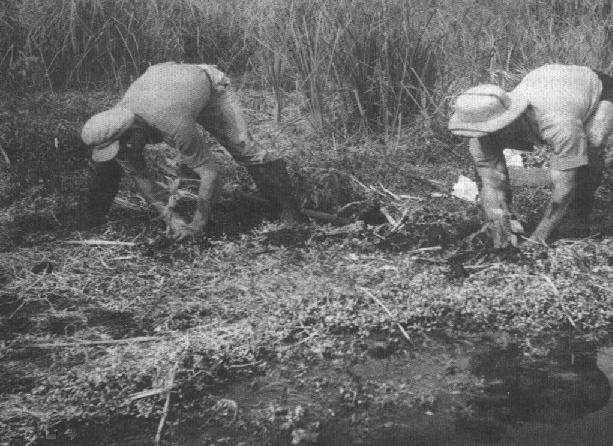Marshes and winter pools that once characterized the coastal plain and valleys of Israel have almost disappeared in the last 150 years. Population growth in Israel has led to the conversion of many natural habitats to agricultural and built-up areas, and to competition between the needs of nature and the needs of man for water resources

Marshes and winter pools that once characterized the coastal plain and valleys of Israel have almost disappeared in the last 150 years. Population growth in Israel has led to the conversion of many natural habitats to agricultural and built-up areas, and to competition between the needs of nature and the needs of man for water resources. The recently published research by Dr. Noam Levin from the Department of Geography at the Hebrew University and Prof. Avital Gazit and Dr. Eldad Elron from the Department of Zoology at Tel Aviv University revealed that of the 192 marshes and winter pools that existed in the central coastal plain in the mid-19th century, only 18% (35 in number) still exist today.
In the study, published in the journal Landscape and Urban Planning, the number of swamps and ponds in the coastal plain, between Hadera in the north and Ashkelon in the south, was mapped for the first time, and their area was measured. For the purpose of mapping, the researchers used a variety of historical maps such as Napoleon's siege map of Jaffa from 1799, the British Palestine Exploration Fund (PEF) map from 1880, British maps from the Mandate period, aerial photographs from World War I and II, as well as satellite simulations and contemporary aerial photographs. The study also incorporated geographic information systems and statistical techniques from the field of ecology in order to estimate the extent of the marshes and winter pools.
The results of the research showed that 82% of the winter pools and marshes that existed in this area until the 19th century according to historical sources no longer exist. According to the researchers, in the 19th century, the number of winter pools and marshes before they were drained or destroyed was close to 600. In addition to reducing their number, human activity has resulted in a dramatic reduction in their area. The research revealed that in the past the area of the ponds and marshes in rainy years was significantly larger than it is today. If in the past their total area during the winter season was approximately 27.6 square kilometers in the winter season, today their total area is approximately 2.4 square kilometers, which means a reduction of over 90% of the area.

In the past, almost all the ponds and marshes along the coastal plain were less than one kilometer apart, but today they are two times or more distant from each other and are interrupted by roads and built-up areas, which reduces the possibility of species that exist in winter ponds, such as amphibians, moving between them.
The reduction in the number of humid habitats in Israel and in their territory and the interruption of them, led to the extinction of at least one species of amphibian that was endemic to the country (the black-bellied round tongue, following the desiccation of the sickle) and of 22 plant species from the country.
"The winter pools and marshes that still remain on the coastal plain are small and surrounded by built-up areas and roads," says Dr. Levin, "only about 14 winter pools and marshes along the central coastal plain are within existing or planned permanent reserves." The researchers point out that the dire state of the winter pools and marshes in the country emphasizes the urgent need for a plan to protect those that still remain. "In light of the success of the establishment of Agmon Hula. We recommend restoring and statutorily protecting a number of winter pools and marshes that were drained in the past along the coastal plain, both for nature conservation purposes such as reducing spatial isolation and as an anchor for eco-tourism."

2 תגובות
Indeed, today there are not many winter pools left in Israel, but many of those that have survived have been declared nature reserves.
I suggest learning more in the following index which centers dozens of winter pools in Israel, including detailed information on each of them, photos and location on the map:
http://www.inature.info/wiki/בריכות_חורף_(שלוליות)_בישראל
Is there a connection between the presence of swamps and winter pools and precipitation?